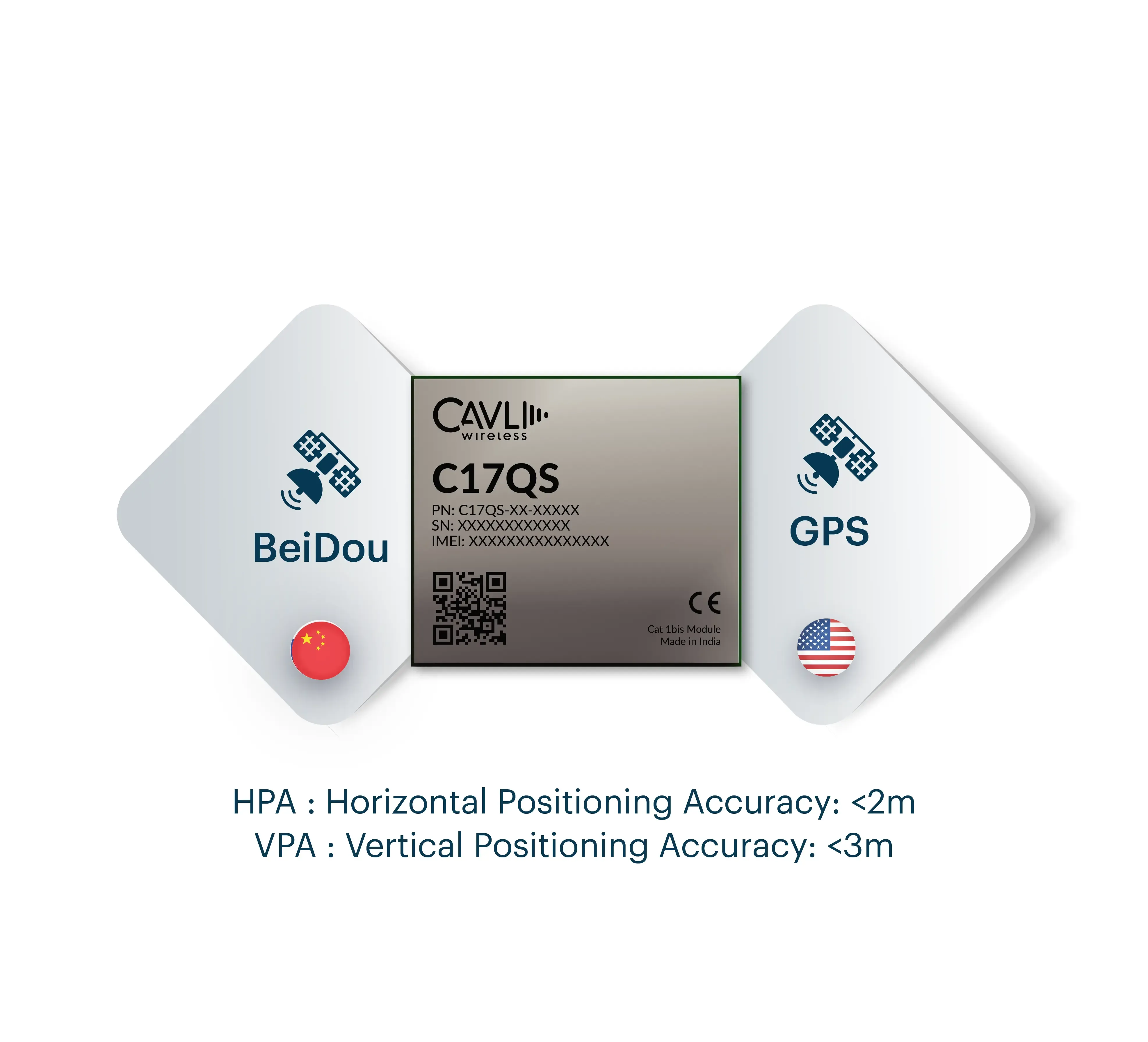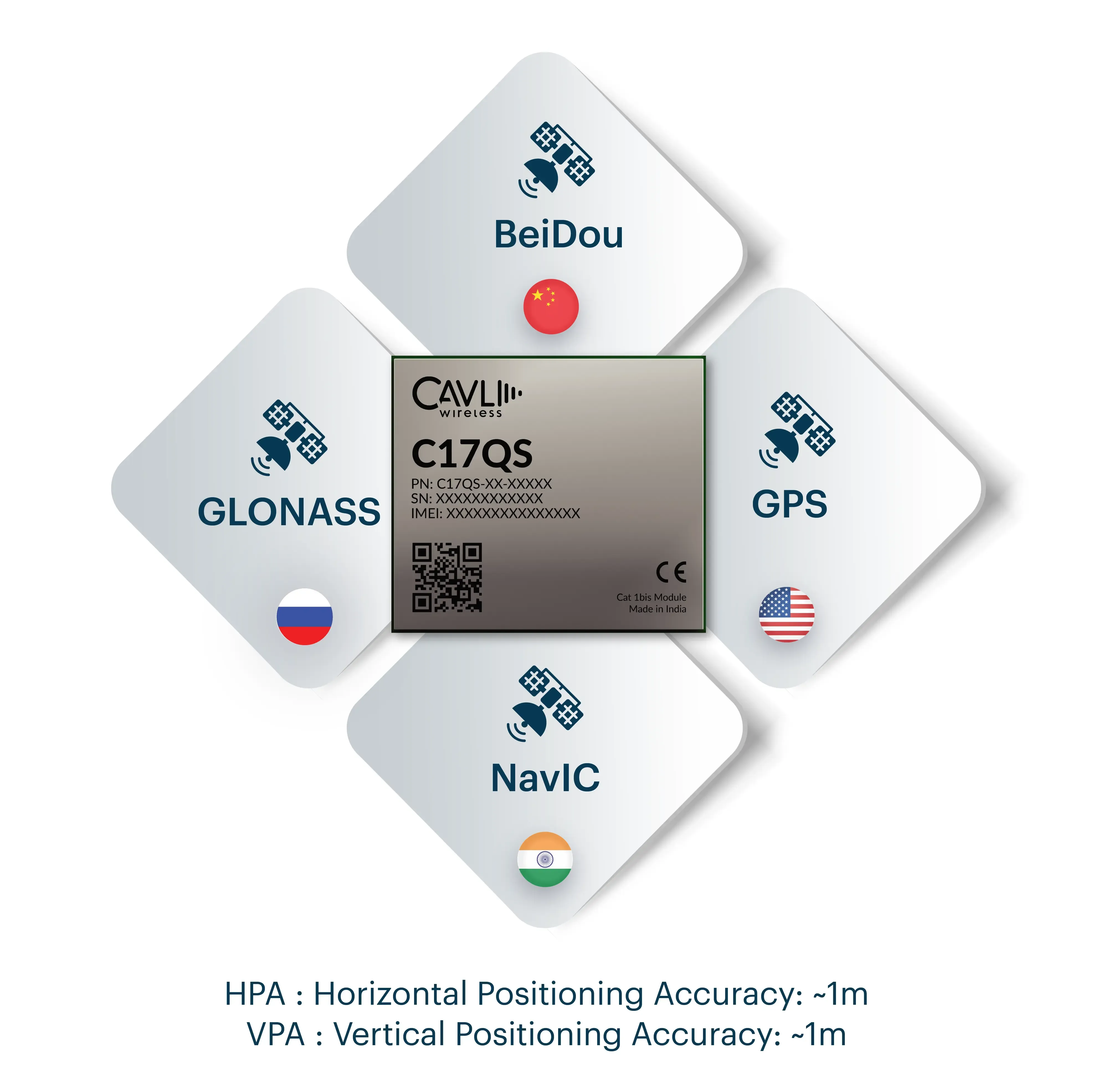In the intricate world of IoT, location awareness is paramount. For many applications, from asset tracking to smart agriculture, knowing where something is proves as crucial as knowing what it is. However, the accuracy and reliability of location data hinge significantly on the Global Navigation Satellite System (GNSS) capabilities of the cellular IoT module at the heart of these solutions. A simple L1-only GNSS solution might suffice for basic tracking needs, but when precision is paramount, the limitations become apparent. Cavli addresses this challenge with the C17QS cellular IoT module, offering both L1-only and the advanced L1+L5 variants, empowering OEMs to choose the precision level that perfectly aligns with their application requirements.
The challenge for OEMs is not simply about having an OS; it is about choosing the right OS. Each OS presents its own strengths and weaknesses, influencing the entire development journey and the final product's capabilities. Let's examine the factors that drive OEMs towards or away from a particular operating system for their smart connected solutions.
Showcasing the C17QS: Power and Precision in a Compact Package
The C17QS, built on Qualcomm's latest QCX217 chipset, is a capable LTE Cat 1bis module designed for a wide range of IoT applications. Its Arm Cortex M3 processor (up to 306 MHz) and ample memory (2MB RAM, 8MB Flash) provide the resources needed for demanding edge computing tasks within a compact form factor that offers low power consumption. The module's iSIM capability which is under heavy development ensures future-proof global connectivity for deployments across the world. Beyond its processing capabilities, the C17QS stands out with its versatile GNSS variant offerings:
Choosing the Right Amount of Precision
The C17QS is offered with the choice of two different GNSS chipsets, allowing OEMs to select the optimal solution for their specific needs: a cost-effective L1-only version and a high-precision L1+L5 variant. This choice empowers developers to carefully balance performance, cost, and development complexity.
The L1-only variant supports GPS and BeiDou constellations, achieving a horizontal positioning accuracy of < 2.0m and a vertical positioning accuracy of < 1.0m.
This configuration is well-suited for applications where general location awareness is sufficient, such as basic asset tracking, geofencing, or simple navigation. By limiting the supported constellations, this variant reduces complexity and cost, making it an attractive option for budget-conscious applications.

The L1+L5 variant significantly enhances positioning capabilities, supporting GPS, GLONASS, Galileo, BeiDou, NavIC, QZSS, and SBAS. This multi-constellation support improves accuracy, reliability, and availability, particularly in challenging signal environments. L1/L5 receivers offer improved multipath mitigation (as signals bounce off buildings and other obstacles), leading to more precise position calculations, especially in urban environments. The L5 signal's wider bandwidth compared to L1 allows for more accurate measurements and enhanced resistance to interference.
The L1+L5 variant achieves greater horizontal (upto 1.0m) and vertical (upto 1.0m) positioning accuracy, though in practice combining L1 and L5 bands allows the module to achieve higher accuracy over normal operational condititons.
The L1+L5 variant achieves similar horizontal (~1.0m) and vertical (~1.0m) positioning accuracy as the L1 only variant, though in practice combining L1 and L5 allows the module to achieve higher accuracy overall.
This enhanced precision makes the L1+L5 configuration ideal for applications demanding high accuracy and reliability, such as high-value asset tracking, autonomous navigation, and precision agriculture. The inclusion of the Qualcomm QCG110 GNSS receiver further enhances performance and enables advanced features. Though supporting more constellations typically increases the cost, L1/L5 offers a commercially viable option when greater precision is required. Moreover, the variety of supported constellations enables worldwide operation. Ultimately, the choice between the L1-only and L1+L5 variants depends on the specific requirements of each application.

Optimizing for Performance and Cost for OEMs
Consider a fleet management solution for a logistics company. For tracking a large fleet of delivery trucks that roam around vast regions, the C17QS with L1-only GNSS might be the ideal solution. It provides sufficient accuracy for monitoring vehicle locations, optimizing routes, and ensuring timely deliveries, all while keeping costs in check. The streamlined development process enabled by the FreeRTOS with its low memory footprint and extensive SDK support allows for faster time to market and reduced development expenses.
Now imagine a high-value asset tracking scenario, such as monitoring sensitive medical equipment during transport. Here, precision and security are paramount. The C17QS with L1+L5 GNSS, powered by the Qualcomm QCG110, delivers the required accuracy and reliability. The dual-band capability mitigates common GNSS errors like multipath interference and atmospheric delays, providing precise location data even in challenging environments such as tracking within a metropolitan area with high-rise buildings aplenty. This ensures that the valuable asset's location is known with pinpoint accuracy, enhancing security and minimizing the risk of loss, tampering or theft.
Enhanced Accuracy and Reliability for End Users
Consider the implications of India's recent amendment to the National Highways Fee Rules, introducing electronic toll collection via satellite-based GNSS systems. This shift towards distance-based tolling requires highly accurate and reliable location data. Imagine a driver commuting between cities on national highways. With a C17QS module featuring the L1+L5 GNSS variant embedded in their vehicle's On-Board Unit (OBU), the precise distance traveled is accurately recorded, ensuring fair and transparent toll calculation. The L1+L5 variant's superior accuracy, especially in challenging environments like urban canyons where GPS signals can be degraded, becomes crucial for reliable toll collection. The multi-constellation support of the L1+L5 variant ensures consistent and precise positioning, even in areas with limited satellite visibility. This eliminates discrepancies in toll calculations, benefiting both the driver and the toll operator. Moreover, the enhanced accuracy reduces disputes related to toll charges, as the precise distance traveled is readily available. The driver benefits from a seamless and automated toll payment experience, avoiding delays at toll plazas and reducing congestion.
For shorter trips, the accurate distance measurement ensures that drivers are only charged for the distance traveled beyond the 20-kilometer threshold, maximizing cost savings. Furthermore, the high reliability of the L1+L5 variant minimizes instances of incorrect toll assessments, further enhancing the user experience and promoting trust in the electronic toll collection system. Ultimately, the enhanced accuracy and reliability of the L1+L5 solution contribute to a more efficient, transparent, and user-friendly tolling system for all stakeholders.
Closing Notes:
The C17QS, with its dual GNSS variants, embodies Cavli's commitment to providing tailored solutions that precisely meet the diverse needs of the IoT landscape. By offering both L1-only and L1+L5 options, Cavli empowers OEMs to choose the level of precision that best suits their application, optimizing both performance and cost. Contact Cavli today to explore how the C17QS can enhance your next IoT project.
Go Beyond and Explore
What makes the C17QS module a standout choice for location tracking applciations?
The C17QS module excels in location tracking due to its advanced GNSS capabilities:
- Supports both L1-only and L1+L5 GNSS variants for varying levels of precision, ergo various requirements in asset tracking.
- L1-only variant is cost-effective and suitable for basic asset tracking.
- L1+L5 variant offers multi-constellation support for higher reliability in challenging environments and greater precision when tracking say high value assets.
How do the L1-only and L1+L5 GNSS variants differ?
The two variants address different use cases:
- L1-only: Supports GPS and BeiDou constellations with accuracy of <2.0m horizontal and <1.0m vertical. Ideal for basic tracking applications.
- L1+L5: Multi-constellation support for GPS, GLONASS, Galileo, NavIC, Beidou, QZSS and SBAS constellations. Provides higher accuracy and reliability.
What are the key applications enabled by the C17QS module’s GNSS capabilities?
The C17QS module powers various IoT applications, including:
- Asset Tracking: High-value asset monitoring with enhanced accuracy and security.
- Smart Toll Collection Solutions: Enables future proof toll collection that bills based on distance travelled on a particular toll road.
- Precision Farming: Guiding autonomous tractors and other agricultural machinery, optimizing irrigation and fertilizer application based on location.
Can the C17QS module enable Connected Solutions in the Automotive sector?
The C17QS can enhances such initiatives by enabling connected solutions such as:
- Fleet Management:Tracking vehicle location, speed, and fuel consumption to optimize routes, improve driver safety, and reduce operational costs.
- Ride-Sharing and Taxi Services:Monitoring location, speed, and distance during workouts.
- Public Transportation:Tracking buses, trains, and other public transport vehicles to provide real-time arrival information and optimize schedules.
